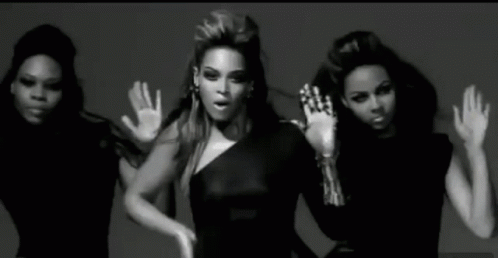If You Like It Put A Ring On It
As the great philosopher, and international superstar, Beyonce, once said, “If you like it, put a ring on it”.

(Source: Hand Shake Head Shake GIF. Tenor.com)
So you’ve met the love of your life and now you want to pop the question, but you need the perfect ring. With all the different types of engagement ring settings available, anyone who’s new to the world of engagement rings will probably be feeling a little overwhelmed. To help you decide, we’ve whittled it down to the top five most common engagement ring settings. Scroll down to ease your ring shopping anxiety.
What is ring setting and why does it matter?
To put it simply the ring setting refers to how the diamond is fitted onto the ring. If your diamond was your lunch, the ring’s setting would be where you put your food in, your lunch box. The setting of a ring affects how it’ll end up looking, what kind of diamond you’ll want to pair it with, and how often the ring will need cleaning. This means that when you’re deciding on a ring setting, you may want to think about your budget, the wearer’s lifestyle and personality (or design preferences).

1. Prong Setting (Solitaire/ Trellis)
The prong setting is the most common type of ring setting used for engagement rings. Its mechanics are similar to a claw machine, wherein the claws or prongs grip onto the diamond and hold it securely in place. This setting is also synonymous with Solitaires — jewelry with a single gem or diamond. While shopping, don’t be alarmed if you suddenly hear the term ‘prong setting’ and ‘solitaire’ used interchangeably. The prong setting is the most popular setting because it draws the viewer's attention to the center of the ring, your diamond.
The prong setting can also be further broken down to 4 prongs, 6 prongs, or even 8 prongs.

Source: Carat 55 - Vintage Gold (4 Prong Setting)

Source: Carat 55 - The Crown (6 Prong Setting)
If you’ve ever been on a date in the arcade, you’ll know how hard it is to win a plushie with only 2 or 3 flimsy claws as compared to those with more. This is the same for rings. The more prongs, the more secure your diamond will be. This means that a 6 prong setting will be more secure than a 4 prong setting. The 4 prong covers a smaller surface area of the diamond so that means its diamond captures more light and eventually gives the ring more bling. This means the lesser the prongs, the shinier the diamond. You might want to note, for solitaire designs, the thinner the band, the larger the center stone appears.
Pros:
- Maximised bling - Compared to other setting styles, the prong setting allows the center diamond the most exposure to light from all angles. This means that it maximises the gem’s beauty and brightens up richly coloured gems.
- Competitive pricing - It involves lesser metal, which usually translates to lesser time and money required compared to other setting styles.
- Easiest to clean
- Versatile - it’s able to safely house even the softest and most fragile of gems
Cons:
- Least Protection - It offers your stone the least protection from accidental knocks and bumps compared to other setting styles since most of the outer perimeter of the stone is unprotected.
- Not practical for day to day wear - It may easily get caught in hair or snag clothing. High - set prongs may scratch and hurt people when brushed against. (Lower prong settings are more practical for everyday wear)
2. Pavé Setting

Source: Carat 55 - Vintage Charm (Pavé Setting)
Pavé (pronounced “pa-vay”) is the french word for ‘paved’. Like it’s namesake, the Pavé setting involves a ring band paved with diamonds. Several tiny diamonds are fitted into smaller holes along with the ring metal which set them leveled with the surface of the ring. It’s similar to how stones are laid on cement to create a pavement. These diamonds are placed closely one after another to achieve a sparkly effect around the band, like a never-ending road paved with diamonds.
Pros:
- Extra sparkly - the extra sparkle on the ring, creates the illusion that there are more diamonds than there really are. It’s also a great way to boost the sparkle power of a ring if the center stone is from a lower set.
Cons:
- Sizing and resizing your ring may be tricky if the ring is Pavé set entirely around the full band. (You can opt for a half Pavé set to combat this)
- Pavé might not be recommended for fragile gems
- Might be less secure than a bezel setting if the wearer leads an active lifestyle
3. Cathedral Setting

Source: Carat 55 - Flower Cathedral
The cathedral setting is commonly accepted as the most elegant and classic setting. It is inspired by the arches of a cathedral. The metal arches hold the center stone, your diamond, securely in place. Don’t worry if you find rings with both a cathedral setting combined with something else, like prongs, bezel, or tension settings. Prongs, bezels, and tension settings refer to how the gem is embedded. But the cathedral refers to how the arches frame the gem using the sides of the metal band. Here are more examples:

Source: Carat 55 - Loyalty Ring (Cathedral Setting)

Source: Carat 55 - Floral Love (Cathedral Setting)
Pros:
- Adds height to the center stone at a lower cost - This is a great life hack if you’re broke. The arches can easily create the effect that your diamond is protruding out. This will help the gem to appear larger without actually paying for more carats.
- Unique, eye-catching design - the arches accentuate and highlight the center stone.
Cons:
- Requires more time and effort when cleaning - this is because more arches mean more crevices to clean.
- Not suitable for everyday wear - If you opt for a higher set it might easily snag on clothes and furniture. (But this can be easily solved by pairing the cathedral with a lower set like the bezel setting)
4. Three Stones Setting

Source: Carat 55 - Trio Princess (Three Stones Setting)
It’s really all in the name. The Three Stones setting is essentially three stones placed side by side. However, don’t let its simplicity fool you, the Three Stone setting is extremely versatile. On top of engagement rings, it can also be used for anniversaries or any other occasion. The three stones can all be the same size or more typically the center stone is slightly larger than the two sides which makes it look a little like a podium. The three stones also don’t have to be the same type or even the same colour. This setting is a good way to add in a pop of colour or even a birthstone, so you’ll always remember your partner’s birthday. Traditionally, the three stones, set closely together, are said to symbolize the couple’s past, present, and future. And maybe if your center stone is the largest, you’ll remember to never let your past or your future eclipse your present and let it shine the brightest.
Pros:
- Personalisation - Allows for multiple large stones, including those of different colours and sizes
Cons:
- Requires more cleaning and maintenance than a single stone setting

Source: Carat 55 - Marquise Cluster (Three Stones Setting)

Source: Carat 55 - The Flower Cluster (Three Stones Setting)
5. Halo Setting

Source: Carat 55 - Abstract Moonstone (Halo Setting)
Last but not least, my personal favourite, the Halo setting. Halo engagement rings generally have a larger main center stone with smaller accent stones surrounding it. Most halo rings have either a single or double accent circle. But because of its unique shape, rings designs like floral motifs, latticework, and twisted bezels are entirely possible. Halo rings also tend to embody a nostalgic vintage mood. This is because the classic Halo setting of today has its origins in the Art Deco era of the 1920s. (Think: The Great Gatsby, Flapper Girls, cigars and just great ol’ 1920s glamour.) So if your significant other is in love with antiques or likes the special heirloom feel, this might just be for you.
Pros:
- Versatile - available in many different designs (you can even opt for coloured accent stones)
- Unique vintage look
- Side stones hold the center stone securely and protects it
- Side stones can be used to boost the appearance of a smaller center stone
Cons:
- Resizing may be challenging if there are many side stones lining the band
- Tiny accent stones may become loose
Still confused?
With so many things to consider, hopefully, this little guide will alleviate your ring shopping anxiety. If you’re still confused, book an appointment or head on down to Carat 55 to have a chat with our friendly team. You can DM us on Instagram, message us on Facebook, WhatsApp us or drop us an email too.


